
14 minute read
The Basics
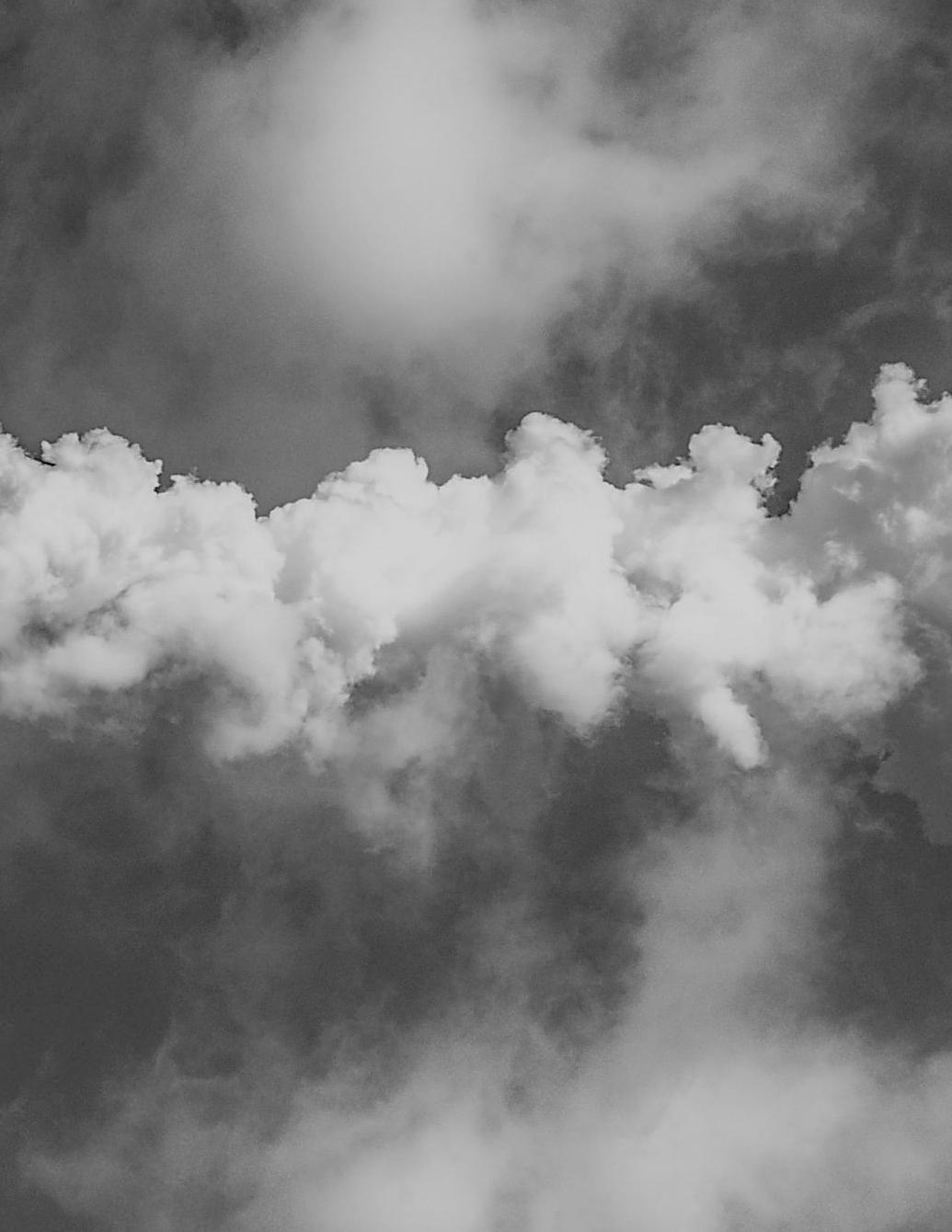
ONE STRAW REVOLUTION
Advertisement
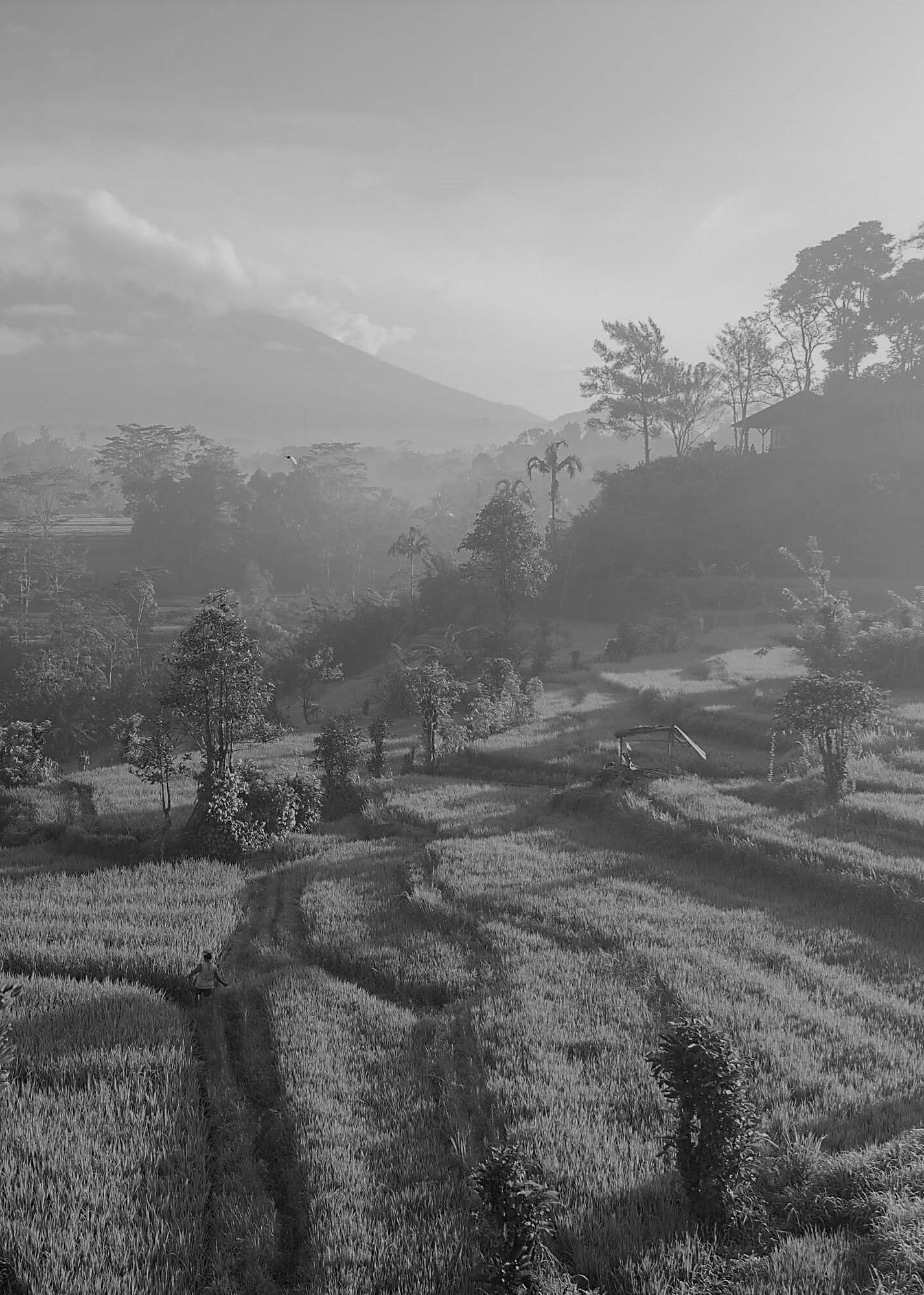
THE ONE STRAW REVOLUTION
MASANOBU FUKUOKA
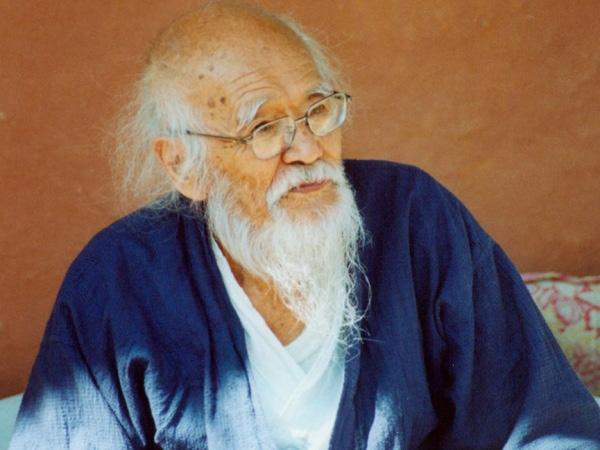
DOCUMENTARY FILM, 86 MINUTES
Originally a book, The One Straw Revolution is a film that introduces and explains a new way of farming created by Masanobu Fukuoka, a former customs inspector who decided to quit his job and put his knowledge of plant pathology to the test. The film shows Fukuoka going to different areas of the world, such as Mumbai, India, to teach people about his practices.His method of farming involves putting seeds in clay balls and “leaving the rest to nature”. Fukuoka beleived that the key to growing great crops was a simple clay ball. This allowed the seeds to not only avoid being tainted with pesticides, but it also provided protection against insects and birds. 3
“If you have doubt, you will not succeed.” -Masanobu Fukuoka 4

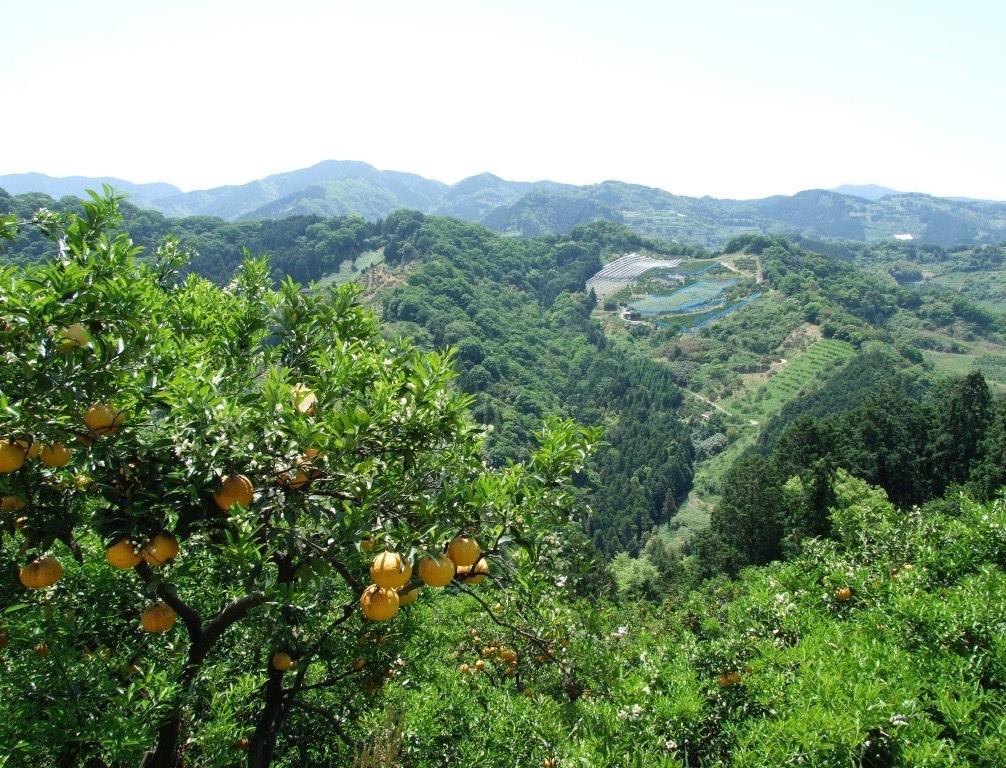
A LIFE ON OUR PLANET

A LIFE ON OUR PLANET
DAVID ATTENBOROUGH

DOCUMENTARY FILM, 83 MINUTES
David Attenborough created A Life on Our Planet as his “witness statement” to show everyone how the planet has changed over the course of his lifetime. In the film, Attenborough shows how our environment has taken a turn for the worse: ice caps are melting, forests are burning, oceans are dying, species are disappearing. Be it the rise in temperatures, the extinction of species, or the disappearance of habitats, all of these are the aftermath of extreme human disturbance of the natural world. 5
“We had broken loose. We were apart from the rest of life on Earth, living a different kind of life. Our pred-
ators had been eliminated, most of our diseases were under control, we had worked out how to produce
food to order. There was nothing left to restrict us; nothing to stop us. Unless we stopped ourselves, we
would keep consuming the Earth until we had used it up.” - DA, 28:45-29:32 6
“We can’t cut down rainforests forever, and anything that we can’t do forever is, by definition, unsustainable.
If we do things that are unsustainable, the damage accumulates, ultimately to a point where the whole sys-
tem collapses.” - DA, 35:06-35:24 7
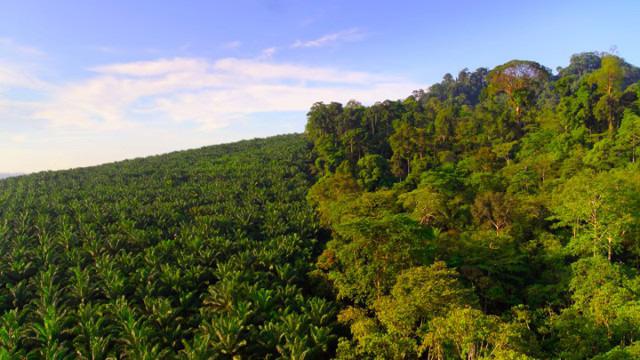

A LIFE ON OUR PLANET
QUOTES + DATA
“A change in atmospheric carbon has always

been incompatible with a stable Earth. It was
a feature of all five mass extinctions.”
- DA, 40:55-41:08 8
“Our blind assault on the planet has finally
come to alter the fundamentals of the living
world. We have overfished 30% of fish stocks
to critical levels. We cut down over 15 billion
trees each year. By damning, polluting, and
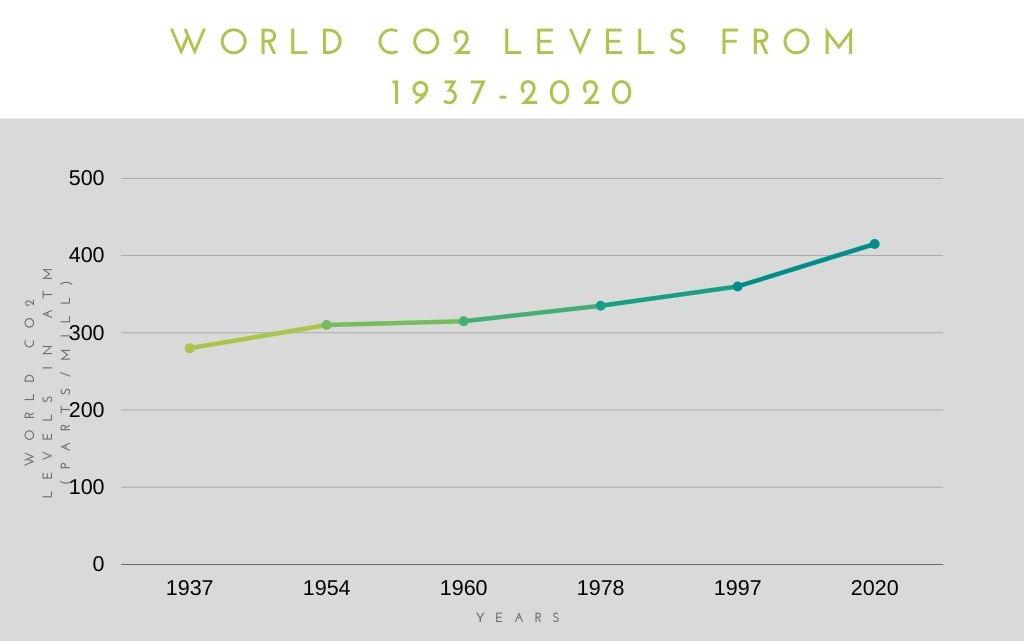
overextracting rivers and lakes, we have
reduced the size of freshwater populations by
over 80%. We’re replacing the wild with the
tame.” - DA, 44:49-45:44 9
“We account for over 1/3 of the weight of
mammals on earth. A further 60% are the
animals we raise to eat. The rest, from mice
to whales, make up just 4%. This is now OUR

planet, run by human kind, for human kind.
There is little left for the rest of the world.”
- DA, 46:10-46:45 10
“We are facing nothing less than the collapse of the living world. The very thing that gave birth to our civiliza-
tion, the thing we rely upon for every element of the lives we lead. No one wants this to happen, none of us
can afford for it to happen. So what do we do?...To restore stability to our planet, we must restore its biodi-
versity, the very thing that we’ve removed.” - DA, 54:08-54:58 11
A LIFE ON OUR PLANET
PREDICTIONS

12
THE DIET THAT HELPS FIGHT CLIMATE CHANGE

THE DIET THAT HELPS FIGHT CLIMATE CHANGE
DR. M. SANJAYAN
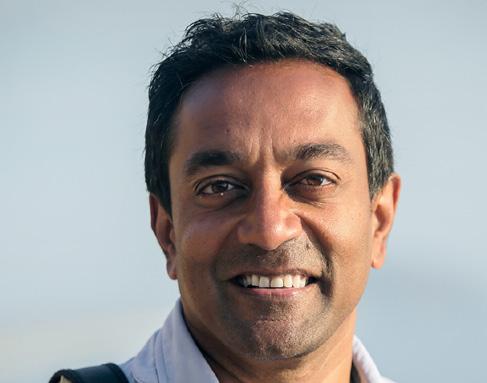
YOUTUBE VIDEO, 5 MINUTES
Dr. M.Sanjayan, the CEO of Conservation International, is the host of Climate Lab, a series produced by the University of California in partnership with Vox. In this video, Sanjayan discusses ways that our diet could help fight climate change. He brings to light just how much meat Americans consume vs. other areas of the world, and how problematic the whole process is. From raising the animals, to slaughtering them, to preparing and transporting the meat, it is a very toxic process.Sanjayan, as well as others featured in the video, suggests we follow a Mediterranian diet to help the planet, which involves eating fish and poulty a few times a week, beef only once a month, and lots of plant-based foods. 13
“If we all just switched to a Mediterranian diet, it could actually solve 15% of global warming pollution by
2050...This would be the equivalent to taking away 1 billion cars” - M. Sanjayan, UCLA Visiting Professor,
CEO Conservation International 14
“25% of all the global climate change problems we’re seeing can be attributed back to the food and the
choices that we’re actually making about what we eat on a daily basis.” - Ben Houlton, DIrector at John Muir
Institute of the Environment, UC Davis 15



I AM GRETA

I AM GRETA
GRETA THUNBURG

DOCUMENTARY FILM, 97 MINUTES
Greta Thunburg is only 17 years old, but she is one of the most well-known and influential activists for climate change in the world. She is not afraid to tell you how it is. Thunburg has been invited to a number of Europeans, UN, and climate change conferences, one-on-ones with presidents and leaders of countries and organizations, and even to participate in strikes all over the world. Everytime she gets the opportunity to call out the politicians who claim they are concerned and trying to solve the climate crisis, she does not hesitate to tell them they are just lying to save face and gain popularity. Greta preaches about saving the climate, so of course she lives a carbon neutral life, saving as much energy as she can. She takes the train instead of using a car. She even sailed to New York City for the Climate Action Summit in 2019 instead of flying. 16
“I’ve met politicians who do not even know what the Albedo Effect is or the Keeling Curve. It’s frightening
that politicians, or journalists, for that matter, don’t have a single clue about this defining issue.” - GT, 14:12
17
“For way too long, the people in power have gotten away with not caring about the climate crisis. We will
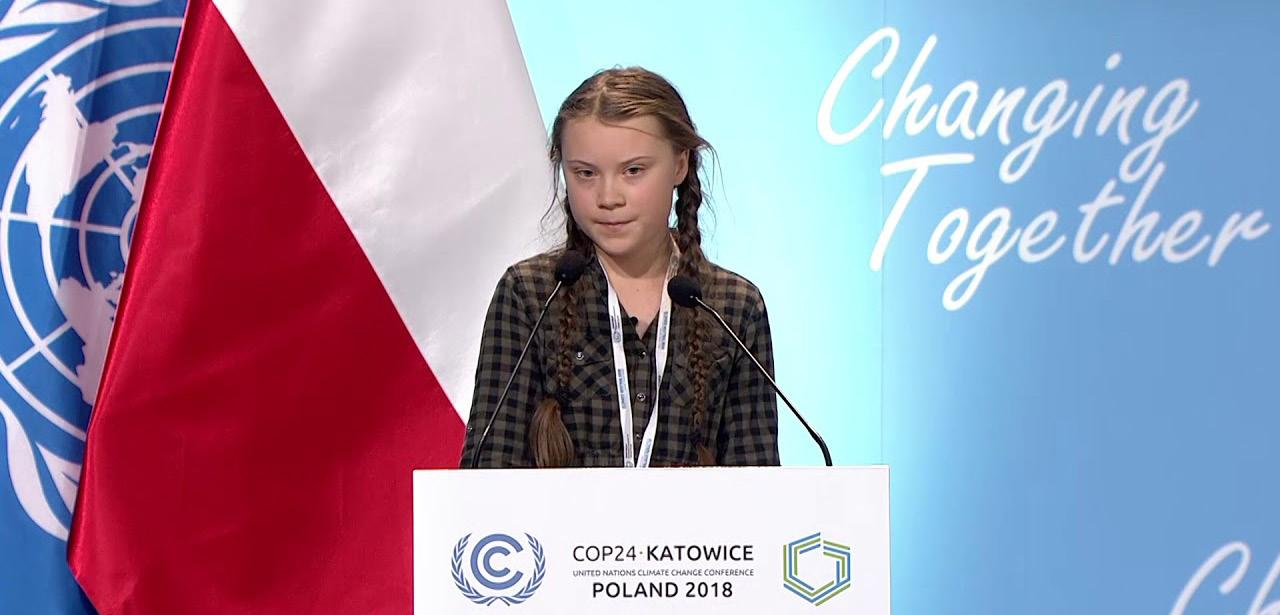
make sure they will not do that anymore.” - GT 18

I AM GRETA
QUOTES + DATA
“Once the climate crisis has gotten your attention, you can’t look away. Once you fully understand the mag-
nitude of the problem, then you can’t erase it.” - GT, 16:12 19
“...but that’s exactly what made me so afraid; that people seemed to think we were making progress.” - GT
on people telling her everything would be okay 20
Greta thinks people, especially the politicians at the head of the climate crisis issue, are not treating it like a
true crisis. “Humanity sees nature as this giant bag of candy, that we can just take as much as we want. So
one day, nature will probably strike back.” - GT on people’s abuse of the natural world 21
HAMBACH FOREST, RHINELAND, GERMANY
One of the many places Greta visited was the Hambach Forest in Rhineland, Germany. She said she
wanted to go in order to attract media attention there so the world could see a concrete example of what is
happening to forests everywhere. Hambach Forest is being cut down in order to clear land for an open pit
coal mine. Between the coal mine and the riddance of all the trees, the once full forest is now a site that is
extremely destructive to the climate. 22
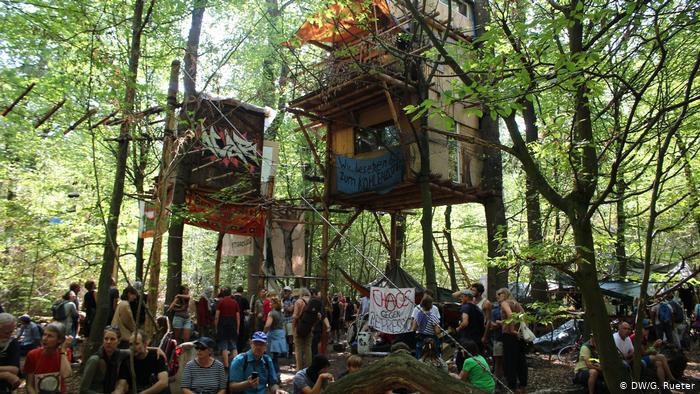

THE ALBEDO EFFECT
Albedo is the measure of how much light is reflected without being absorbed after hitting a surface. Be-
cause lighter colors reflect more light than they absorb, snow and ice play a big role in how much sunlight
is reflected back into space. If more sunlight is reflected, then there is less heat that is absorbed into the
Earth’s atmosphere. Therefore, a lower albedo is bad because it accelerates the speed of global warming
due to more light being absorbed than reflected. Because the Earth’s ice and snow caps are melting at an
alarming speed, the albedo effect has come into play. The less snow and ice we have, the more light and
heat is absorbed, the faster the climate crisis hurts our world. 23
THE KEELING CURVE
The Keeling Curve is a curve that shows the concentration of CO2 in the Earth’s atmosphere. It started in
1958 and is named after Dr. Charles David Keeling, the man who started it. During his research, he noticed
the CO2 samples he collected at night had more CO2 than those taken during the day. This is due to pho-
tosynthesis, the process by which plants take in CO2 during the day and release it at night. He also noticed
these levels were higher in the spring when photosynthesis is at a high point and lower in the autumn when
photosynthesis is at a low point. 24
THE PARIS AGREEMENT
The Paris Agreement is a climate pact approved in December of 2015 that expresses goals towrads a
fossil-fuel free future and to keep the global temperature rise well below 2 degrees Celcius. This suggests
an end to fossil-fuel usage by 2050. So far, each nation that has singned the Paris Agreement has not done
well in reaching, or even keeping, their goals. 25
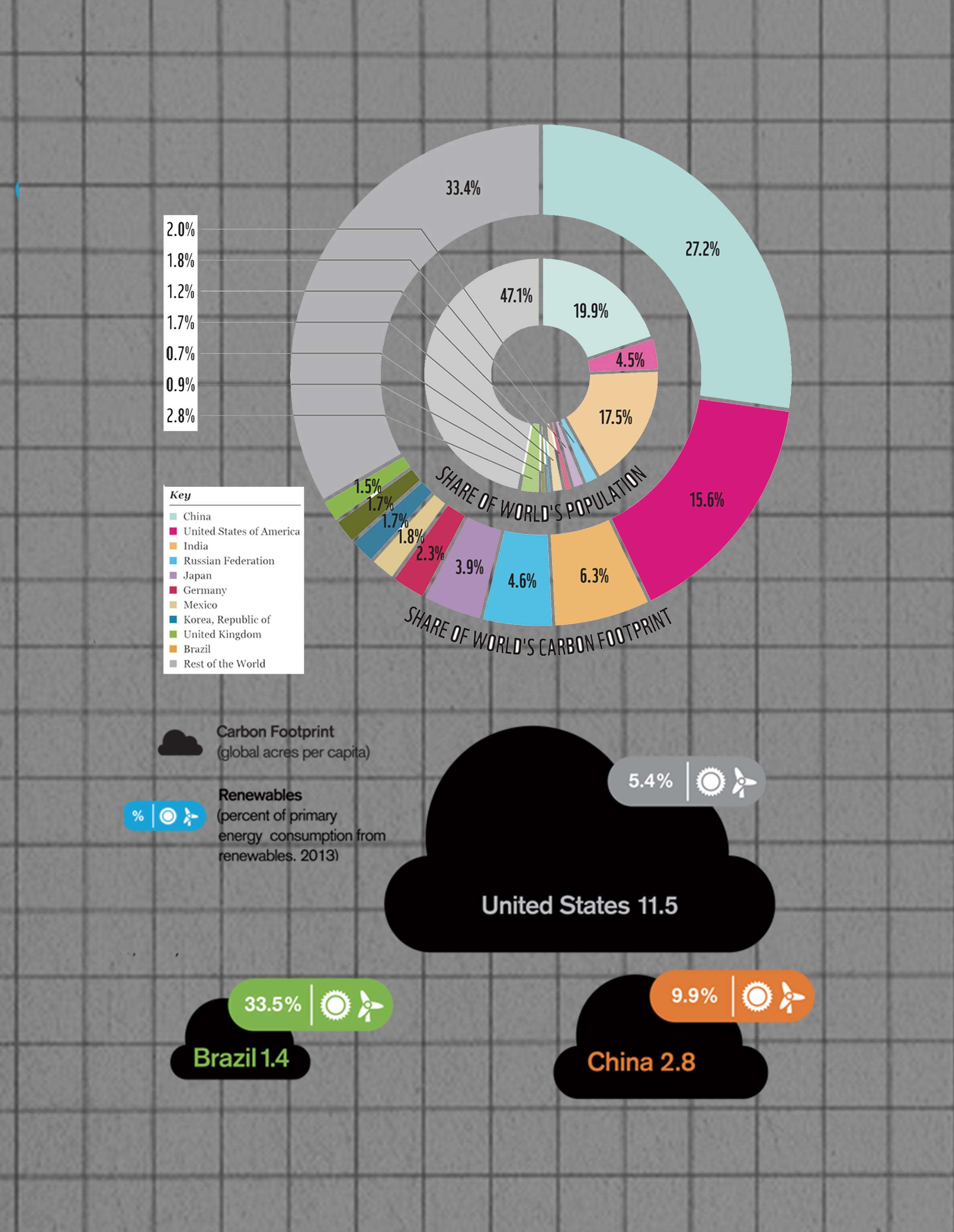
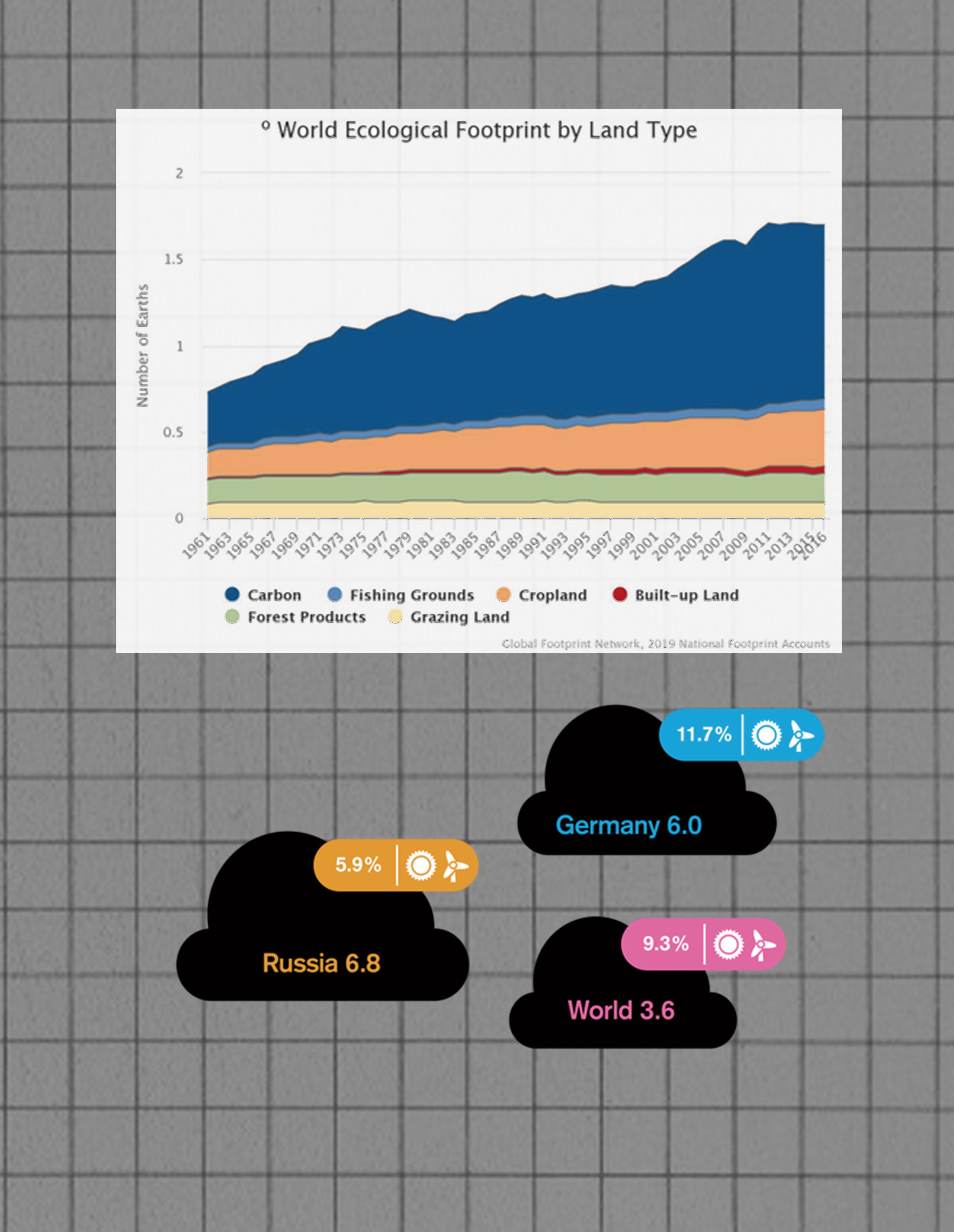
TOWARD AN URBAN ECOLOGY

TOWARD AN URBAN ECOLOGY
KATE ORFF

BOOK, 272 PAGES
In her book, Kate Orff, a landscape architect at SCAPE, describes how she and her firm design for nature. She describes the ‘4 Principles of SCAPE’s Foundation’: 1. Revive - aligning cultural and natural systems for interaction, 2. Cohabit - joining of the terms ‘social justice’ and ‘ecological justice’, 3. Engage - reimagining the linear planning process, and 4. Scale - large problems must be able to be deconstructed and assimilated. Using a systems-based approach, Orff and SCAPE really stress the importance of scale. To them, scale is everything. We must leave the 2-d design process behind and begin to think in 3-d. We must realize that bigger isn’t always better. 26
“Climate change requires us to imagine a systems-based thinking a multiple scales of action, to generate a
magnified understanding of the interconnectedness of systems and processes, to be science-based, and
to scale up our work to affect larger behavioral modifications” - Katie Poppel on Kate Orff’s Toward on Urban
Ecology 27
“Scale provides integration needed for all moving parts of the principles to come together in a successful
and working manner...[it] provides a hopeful, obtainable, and positive backdrop for the ‘wicked’ problems
we face today and in the future.” - Katie Poppel on Kate Orff’s Toward an Urban Ecology 28

TOWARD AN URBAN ECOLOGY
PARK RISING: 103RD ST. COMMUNITY GARDEN, NEW YORK
SCAPE is all about designing for community engagement. 103rd Street Community Garden is a project that was built to serve a severly underserved neighborhood in East Harlem. SCAPE worked with the New York Restoration Project to create a space that would bring the community together. The residents of the neighborhood were able to give feedback to help guide the design process, allowing them to express what they wanted. The actual building process was very hands-on, aided by a lot of volunteers. The finished product includes basketball courts, land plots for vegetables, an uncovered picnic area, a playground, and two shaded areas that include rain barrels that feed captured rain water to the irrigation system. This community garden not only brought a diverse group of all ages from the community to help build it, but it still brings them together to hang out and play some basketball. 29
AWARDS:
NY ASLA Award for Collaborative Design, 2012
Built By Women NYC Winning Site, 2014

TOWARD AN URBAN ECOLOGY
OYSTER-TECTURE, BROOKLYN, NEW YORK
Oyster-tecture was created by SCAPE in participation of MoMa’s Rising Currents exhibition in 2009, meant to encourage development of strategies to help face climate change and rising sea levels. It envisions active oyster reefs in the New York Harbor to aid in diversification of marine life and recreational potential. This living reef would be made up of woven ‘fuzzy rope’ to support marine growth, while also creating a 3-D landscape that lessens the impact of waves. The rope web would also work to clean the water in the harbor through the biotic filtration process of oysters, mussels, and eelgrass. Because this water would be slower and cleaner, it would allow the neighborhood to create channels inland from the Gowanus Canal, allowing the future generations to utilize the ‘waterfront park’ as a sustainable strategy.
This project would not only improve the water as a whole - in quality and habitat availability - but it would also restore the lost biodiversity of the area and encourage a growing relationship between the harbor and the locals. 30
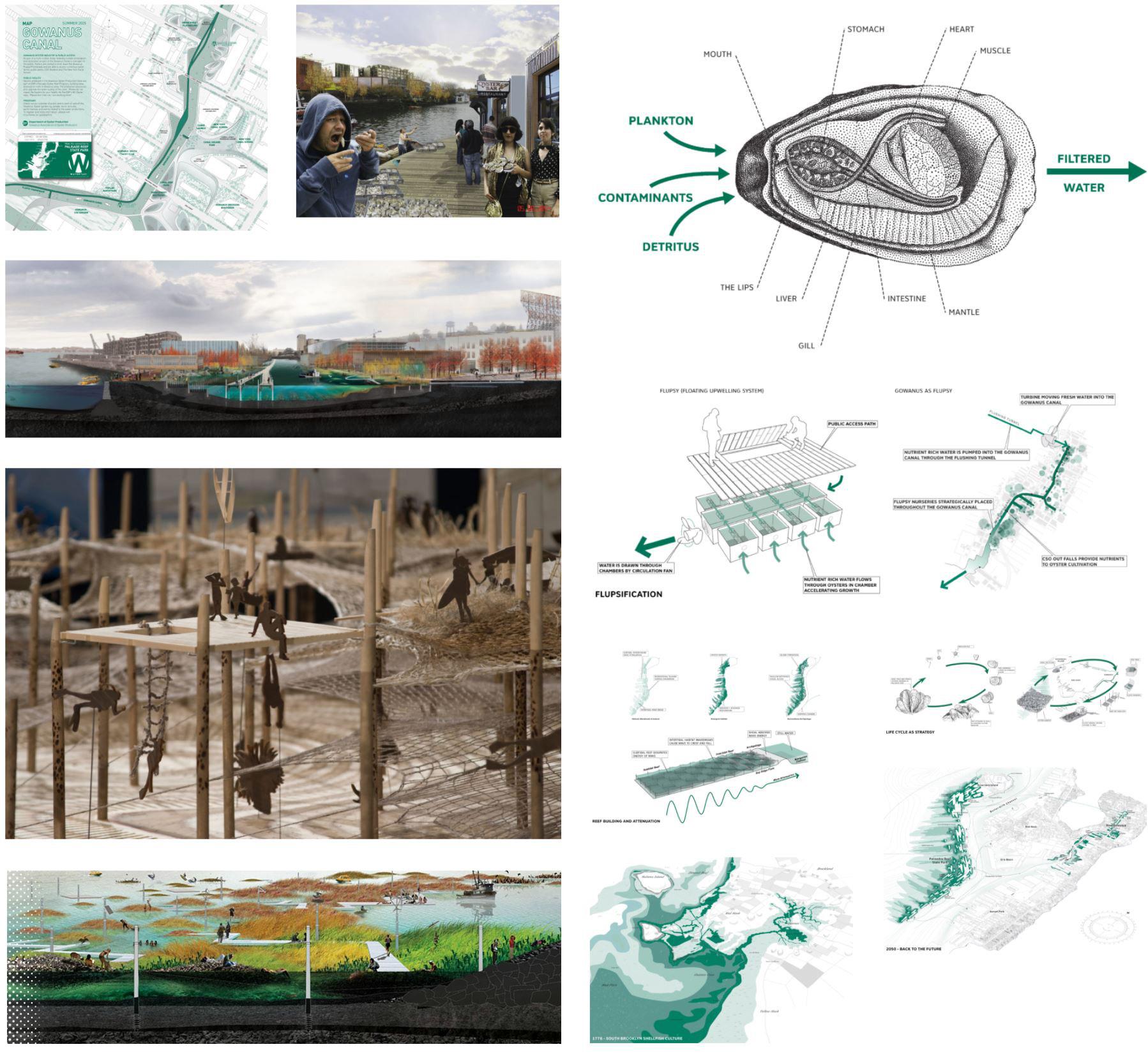
“What Is Climate Change?” NASA, www.nasa.gov/audience/forst udents/k-4/stories/nasa-knows/what-is-climate-change-k4.html. A ccessed 2 Dec. 2020.
“Global Warming Timeline.” AIP, history.aip.org/climate/timeline.h tm. Accessed 2 Dec. 2020.
3+4
Louis Baca. “The One Straw Revolution by Masanobu Fukuoka.” YouTube, 9 Aug. 2016, www.youtube.com/watch?v=DA98_poGm M8.
5-12
“David Attenborough’s A Life on Our Planet.” Netflix, uploaded by David Attenborough, 4 Oct. 2020, netflix.com.
13-15 Vox. “The Diet That Helps Fight Climate Change.” YouTube, 12 De c. 2017, www.youtube.com/watch?v=nUnJQWO4YJY.
16-21 “I Am Greta.” Hulu, www.hulu.com/movie/i-am-greta-6eb88d15-2 2f0-4f7b-90aa-6933ddc2f90a?entity_id=6eb88d15-22f0-4f7b-90a a-6933ddc2f90a. Accessed 2 Dec. 2020.
22
Hambach Forest. “Hambach Forest.” Hambach Forest,hambach forest.org.
23
24
“Albedo | North Carolina Climate Office.” North Carolina Climate Office, climate.ncsu.edu/edu/Albedo. Accessed 2 Dec. 2020.
National Geographic Society. “The Keeling Curve.” National Geo graphic Society, 27 Mar. 2019, www.nationalgeographic.org/ency clopedia/keeling-curve.
25
“What Is the Paris Agreement?” UNFCCC, unfccc.int/process-and -meetings/the-paris-agreement/what-is-the-paris-agreement.
26-28 Poppel, Katie. “Book Review of ‘Toward an Urban Ecology’ by Ka te Orff.” The Global Grid, 27 Feb. 2018, theglobalgrid.org/book-re view-toward-urban-ecology-kate-orff.
29
“103rd Street Community Garden.” SCAPE, 17 Apr. 2018, www.sc apestudio.com/projects/103rd-street-community-garden.
30
“Oyster-Tecture.” SCAPE, 16 Jan. 2019, www.scapestudio.com/pr ojects/oyster-tecture.
0.01
“1450721480.0.” Shutterstock, 2010, cdn.vox-cdn.com/thumbor/ rSl0V06WxA0m62TUHpKqdeSwBNg=/0x0:5568x3712/1200x800/ filters:focal(2339x1411:3229x2301)/cdn.vox-cdn.com/uploads/ch orus_image/image/65099284/shutterstock_1450721480.0.jpg..
1.01
1.02
Nature Editorial. “Soils Linked to Climate Change.” Nature, 21 A ug. 2019, www.nature.com/articles/d41586-019-02450-6?error=c ookies_not_supported&code=ba68b430-34e0-444a-b19d-02ab9 425c3c3.
“What Is Climate Change?” David Suzuki Foundation, 21 Sept. 2
020, davidsuzuki.org/what-you-can-do/what-is-climate-change.
1.03
MacPhail, Nicola. “What a Farming Technique Can Teach You abo ut Change.” Gen-i, 1 Oct. 2019, www.gen-i.co.uk/index.php/2019/ 06/17/change-consistently-support.
1.04
1.05
1.06
Mt. “Sensei: Masanobu Fukuoka and the Quiet Revolution.” Milin do Taid, 13 Mar. 2019, milindo-taid.net/2019/sensei-masanobu-fuk uoka-and-the-quiet-revolution.
Efindlow. “Workshop: FUKUOKA’S Method.” R.O.L.E. Foundation, 2 Dec. 2017, rolefoundation.org/workshop-fukuokas-method.
“One-Straw Messenger: Larry Korn, Author and Natural Farming A dvocate.” Kyoto Journal, 24 Sept. 2019, kyotojournal.org/conversa tions/one-straw-messenger-larry-korn-author-and-natural-farming advocate.
1.07+1.08 Walsh, Joseph. “David Attenborough: A Life On Our Pla net Review - Is the End Nigh?” The Art Desk,10 Oct. 2020, thearts desk.com/film/david-attenborough-life-our-planet-review-end-nigh.
1.09+1.10 Polianskaya, Alina. “David Attenborough: A Life On Our Planet: Netflix and Cinema Release Date and What to Expect from the New Film.” Inews.Co.Uk, 29 Sept. 2020, inews.co.uk/culture/te levision/david-attenborough-a-life-on-our-planet-netflix-release-dat e-cinema-new-film-667576.
1.12
“M. Sanjayan: The Community of Nature.” Conservation & Science , 26 Aug. 2015, futureoftheocean.wordpress.com/2015/08/25/the community-of-nature.
1.11+1.13-1.20 Vox. “The Diet That Helps Fight Climate Ch ange.” YouTube,12 Dec. 2017, www.youtube.com/watch?v=nUn JQWO4YJY. 1.21-1.24 “I Am Greta.” Hulu, www.hulu.com/movie/i-am-greta6eb88d15-22f0-4f7b-90aa-6933ddc2f90a?entity_id=6eb88d15-22f0-4f7b90aa-6933ddc2f90a. Accessed 2 Dec. 2020.
1.25+1.26 Hambach Forest. “Hambach Forest.” Hambach Forest,hambachforest.org.
1.27-1.29 “Climate Change & the Carbon Footprint.” Global Footprint Network, 29 Aug. 2020, www.footprintnetwork.org/our-work/ climate-change/?gclid=Cj0KCQiAk53-BRD0ARIsAJuNhpu964SmpueP8DZcLrNfp9WJ-WCljj9Vl6r5DI5oyNo_eUirHcGKhpIaAhaAEALw_wcB.
1.30+1.31 Poppel, Katie. “Book Review of ‘Toward an Urban Ecology’ by Kate Orff.” The Global Grid, 27 Feb. 2018, theglobalgrid.org/ book-review-toward-urban-ecology-kate-orff.
1.32+1.33 “103rd Street Community Garden.” SCAPE, 17 Apr. 2018, www.scapestudio.com/projects/103rd-street-community-garden.
1.34
“Oyster-Tecture.” SCAPE, 16 Jan. 2019, www.scapestudio.com/ projects/oyster-tecture.







